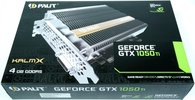
With the GeForce GTX 750 Ti KalmX, Palit already had a first passive candidate at the start and continues this tradition seamlessly with the GeForce GTX 1050 Ti. Otherwise, little has changed visually, only the substructure is really new.
But how well is the interpretation of the Nvidia card suitable for passive solutions and where are their limits?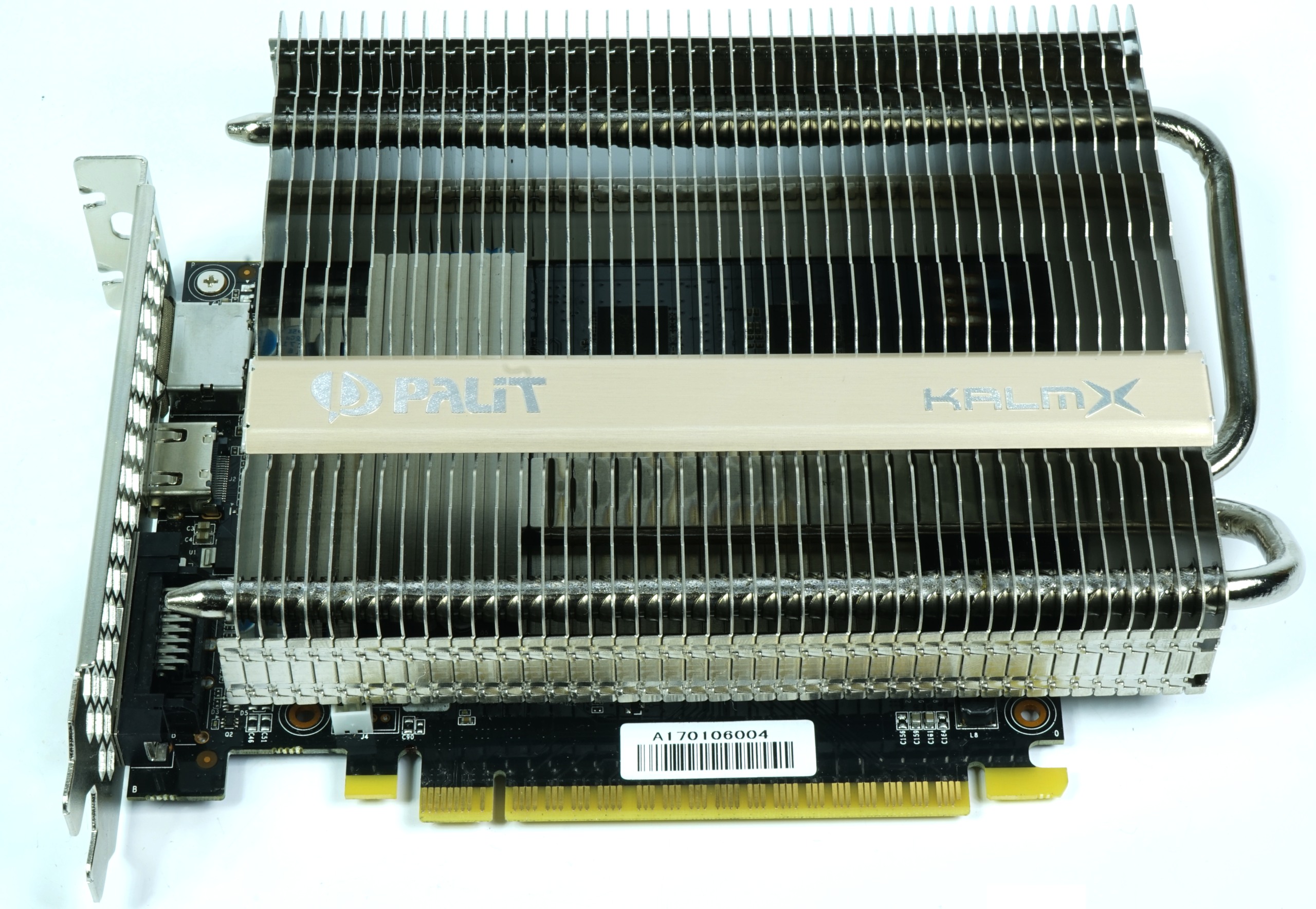
From the known limitations, of course, the more restrained base clock results from this card, which is modest with 1291 MHz (1392 MHz Boost). But what these bar numbers are worth and what is left of them in real terms, we will see later, because I really made the card sweat.
1. External appearance and key data
At just 466 grams, the card doesn't weigh too much and only slightly more than the XFX card. The real installation dimensions are over-achutable with a length of 18.3 cm, a height of 13.7 cm and a mounting depth of 3.6 cm and make the compact quiet pedal a small dual-slot card.
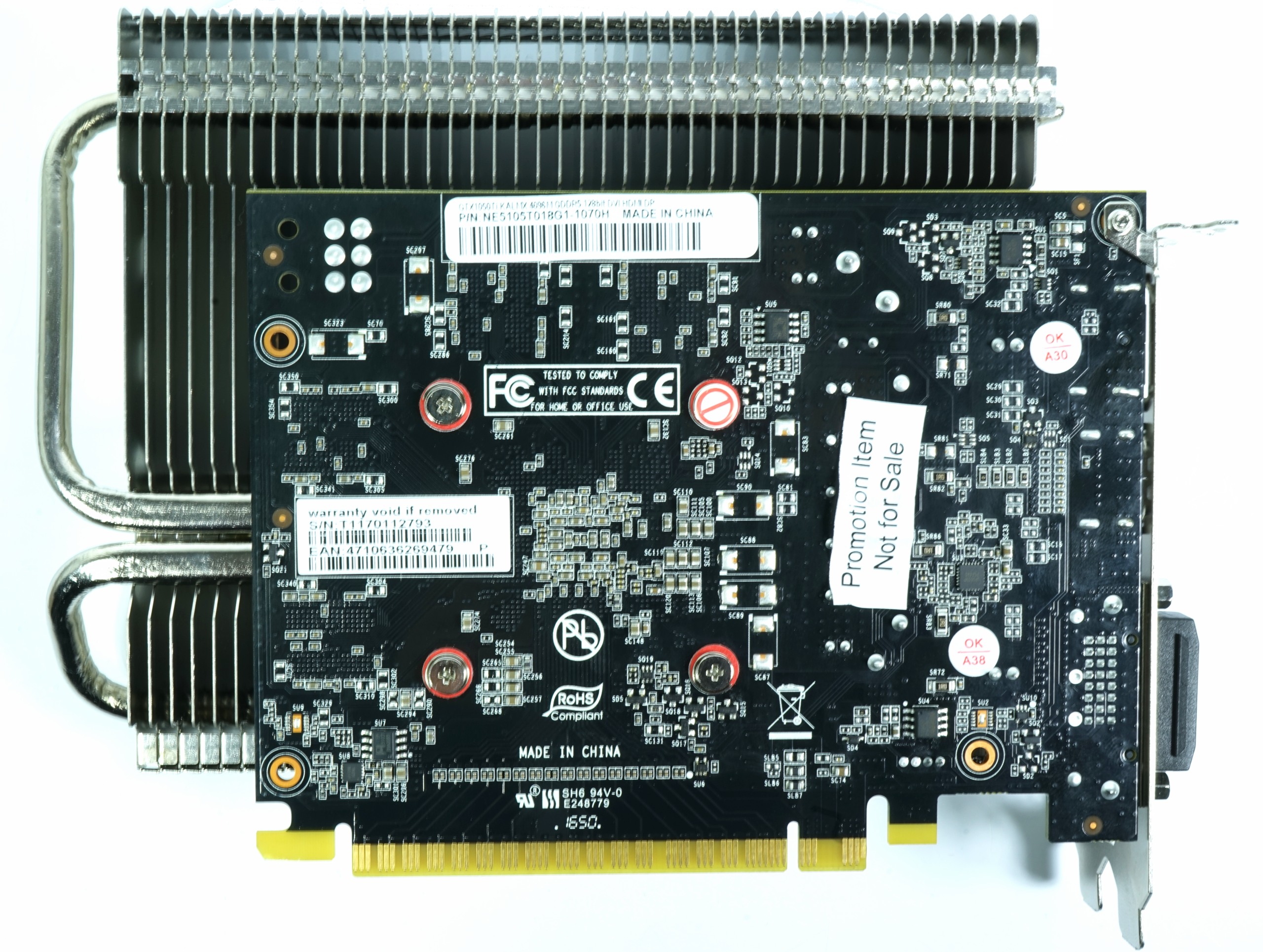 |
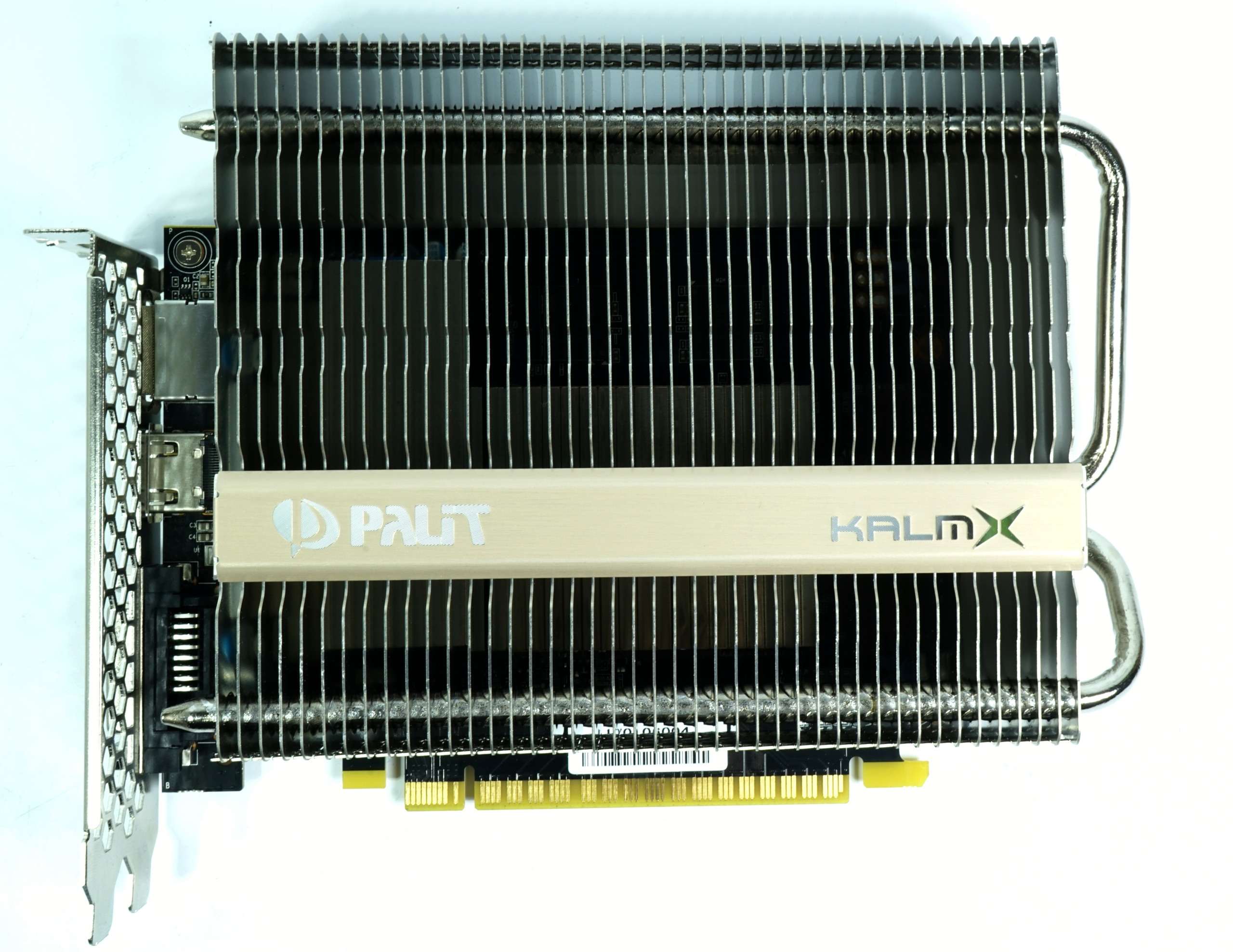 |
Palit has dispensed with a backplate and, in contrast to the older passive cooler, also an overhang of the fins beyond the back, because it could have been possible to get into conflicts with the CPU cooler with ITX systems.

In order to better distribute the waste heat, Palit again relies on two nickel-plated 6 mm heatpipes, which are seated in a copper heat sink. The heat sink with the pressed aluminum fins protrudes over the end and top edge of the board to allow better air circulation.
As with the predecessors, the slats are arranged vertically. This promotes self-convection, but benefits less from a front-mounted airflow in the housing.

However, the vertical orientation is very helpful when the cards are installed standing (e.g. cubes and many mini-ITX solutions). Then horizontally aligned slats have, as with the maps of HIS or now XFX rather the lag.
 |
 |
In the slot panel, the variety of connections is limited to a DVI-D, an HDMI and a single DisplayPort 1.4 port. This creates space for the many honeycomb-shaped air openings, which, however, seem rather useless due to the already mentioned slat orientation.
2. Board layout and power supply
Palit relies on a rather moderate power target for the new card, which can be determined by the lack of an additional power supply connection. Since the board comes from a "normal" Palit GTX 1050 Ti, the soldering eyes for the 6-pin socket are available, but are not used. Also at Palit we see that the voltage converter block has again completely moved towards the slot aperture.
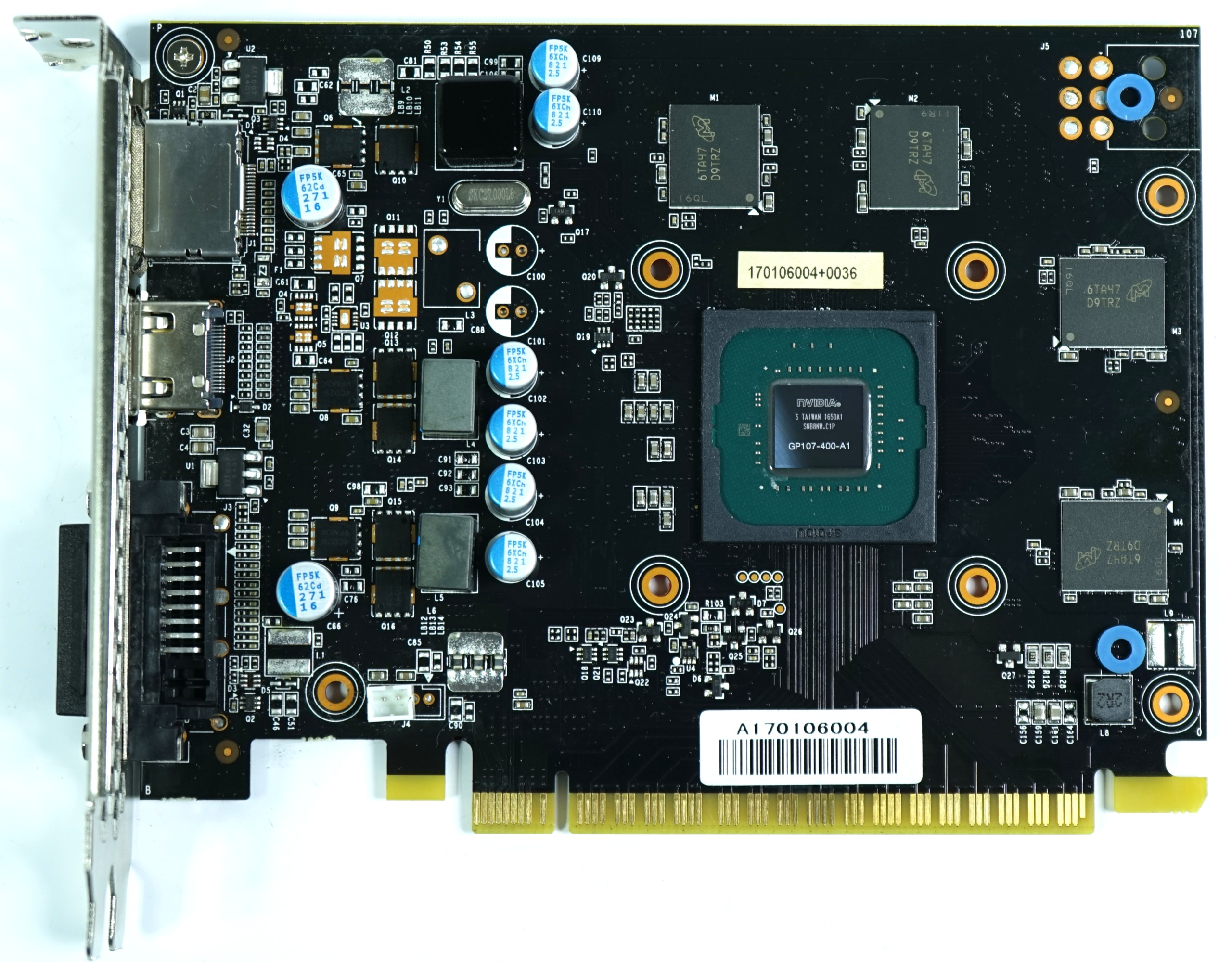
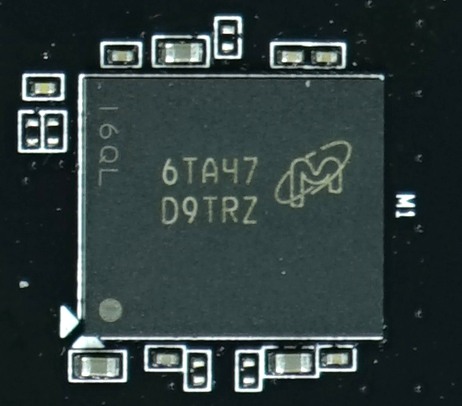 Although the board actually provides three voltage converter phases for the GPU, only two of them are equipped. But I'll get to that in a while.
Although the board actually provides three voltage converter phases for the GPU, only two of them are equipped. But I'll get to that in a while.
In terms of memory, unlike XFX, Palit relies on Micron modules with a capacity of eight gigabits (32x 256 MBit) each, which are operated on the 1752 MHz board and not actively cooled. But that will take revenge, as the Micron memory will be slightly warmer than Samsung's. But I have the right measurements for that.
Back to the power supply of the GPU, which is controlled by an uP 9509 from uPI Semiconductor Corp. Each of the two GPU phases is equipped with a single-N-channel MOSFET 4C019 on the high-side and two single-N-channel MOSFETs 4C024 on the low-side. Normal ferrite core coils are used as coils, which were poured into the cup and manually inserted on the board.
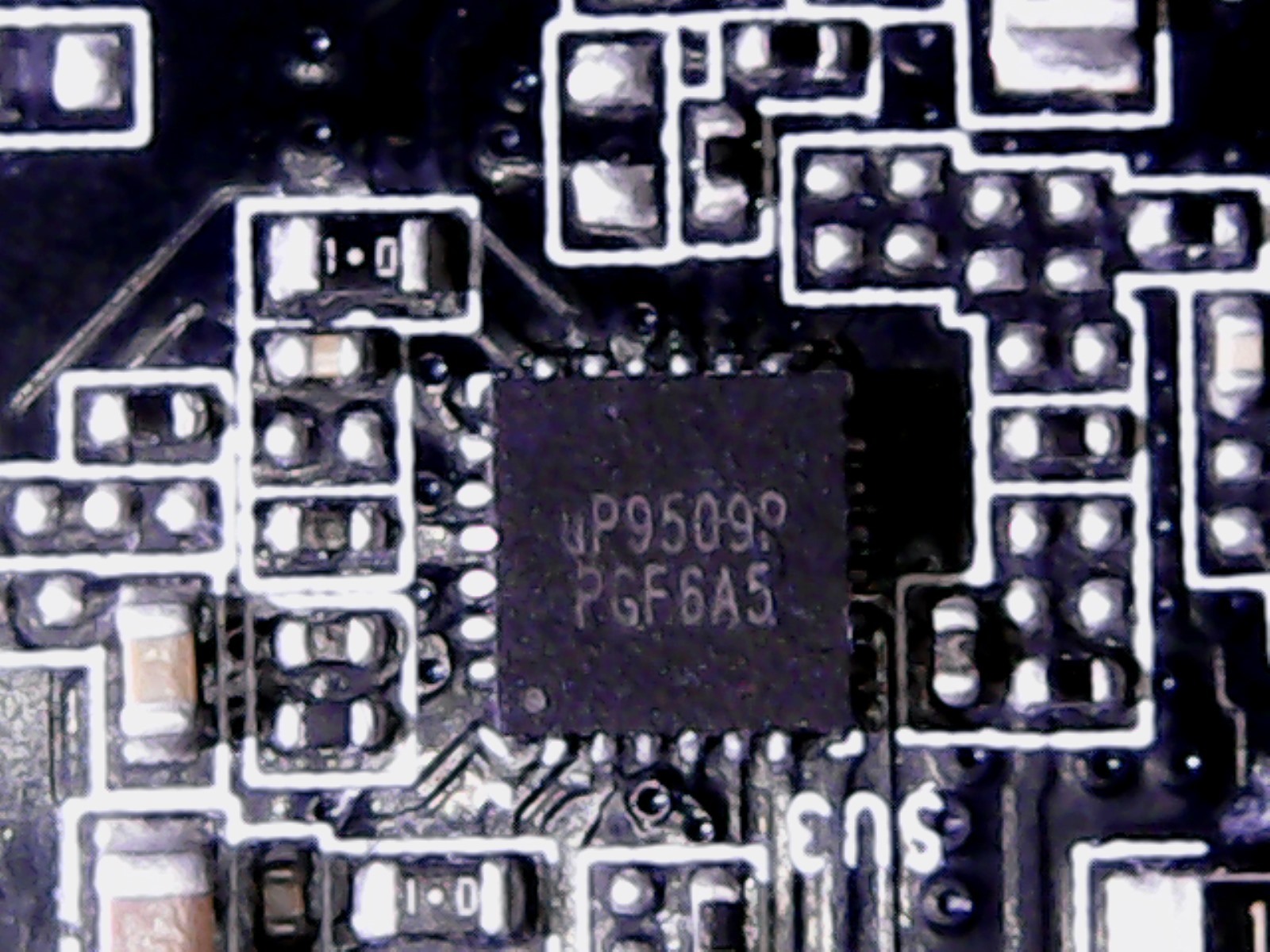 |
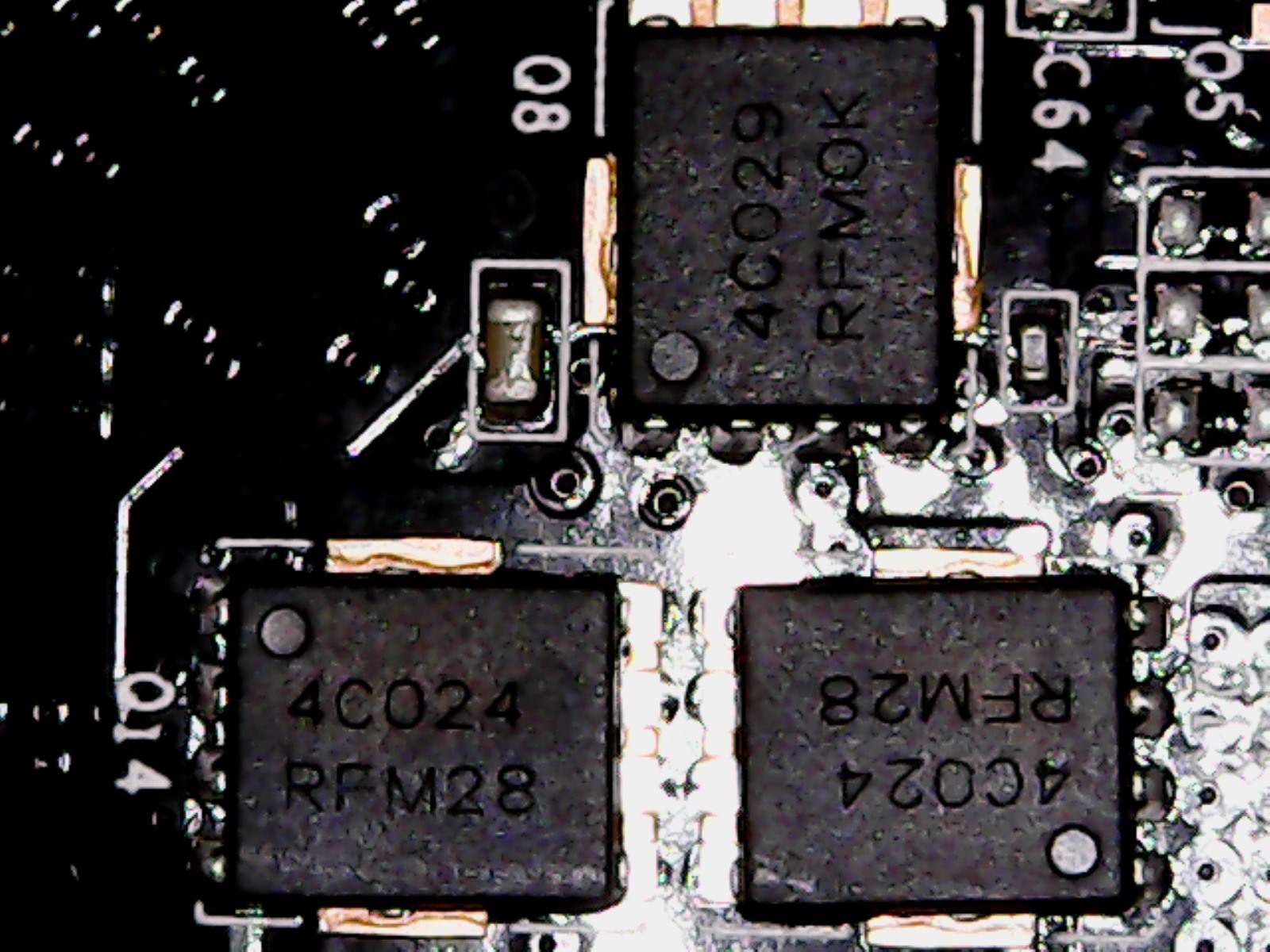 |
In memory, the Realtek RT8128 relies on a simple Single Buck Converter as a PWM controller and a single-N-channel MOSFET 4C024 for high and low-side. That's it.
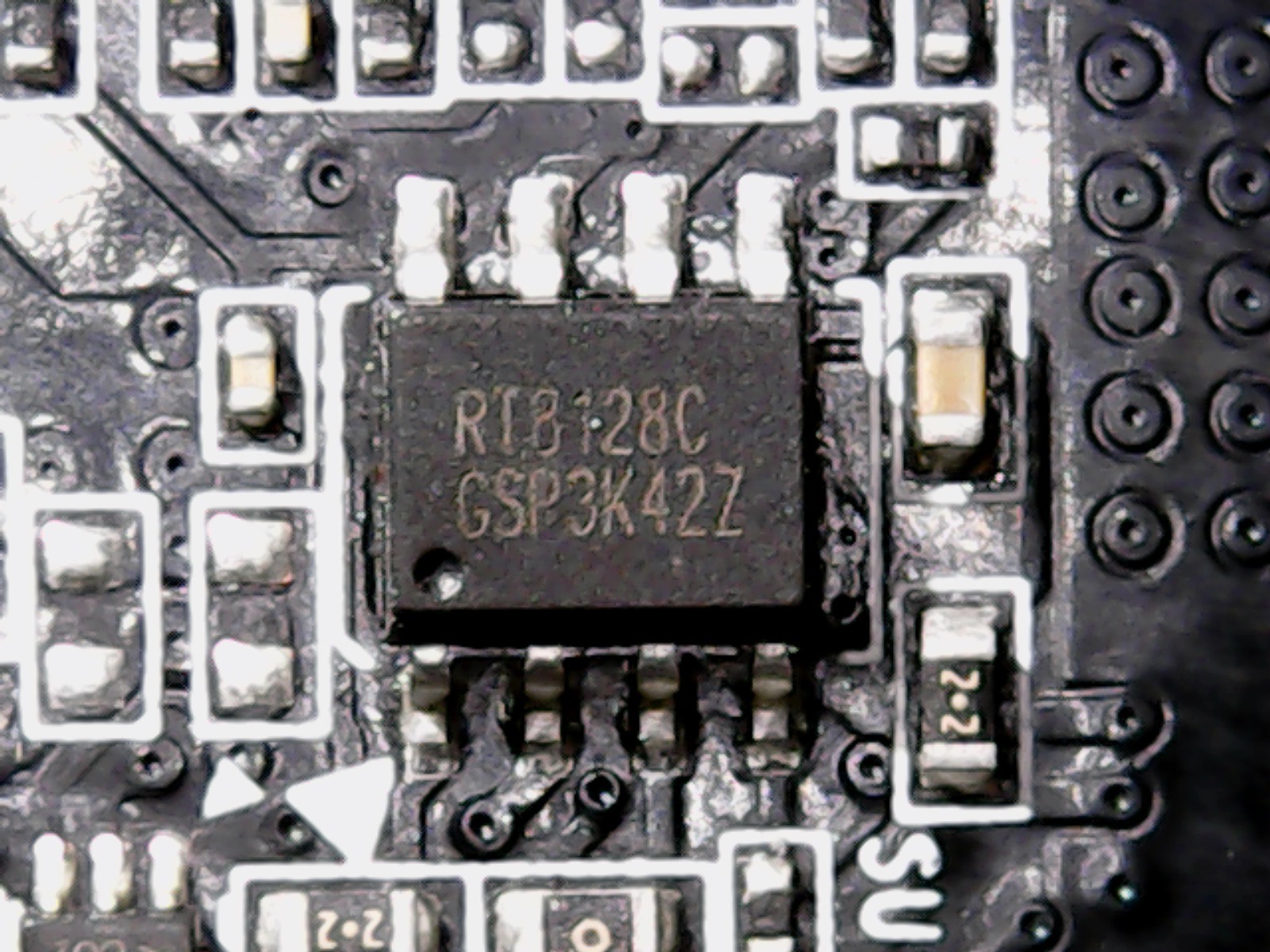 |
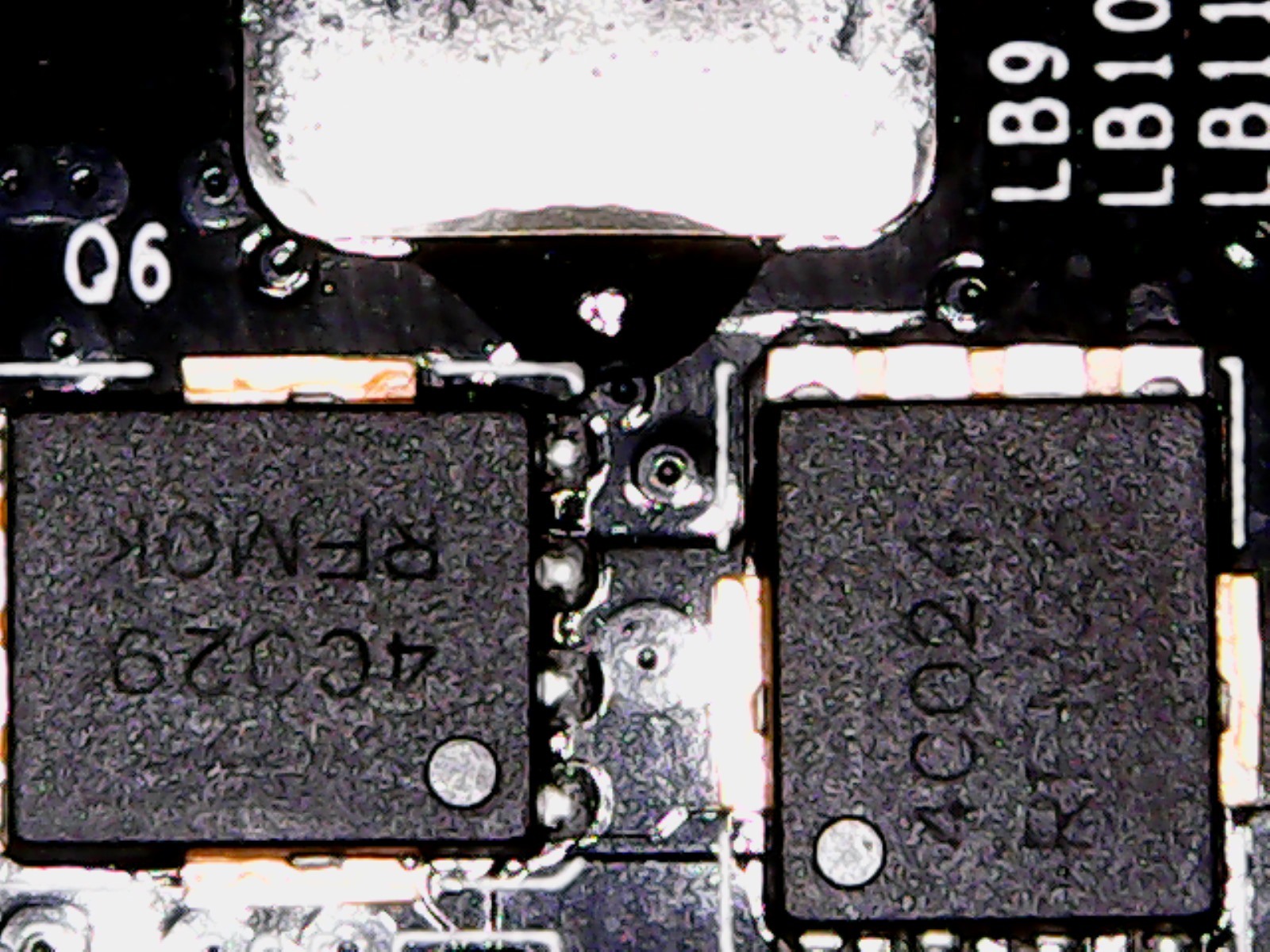 |
3. Power consumption and compliance
As with the passive RX460 from XFX, the power consumption is in manageable areas, which is the basic requirement for passive cooling. In the gaming loop, the card reaches just under 58 watts, while the Torture loop measured just over 58 watts. Much more is not possible with this card on Grunbd of the power target of 60 watts, whereby the peak values represent only short moment values, which also do not have to be used as a guideline for the power supply measurement.
Thus, both tested cards are roughly at the same level of power consumption, although the performance of the GeForce card should be much higher.
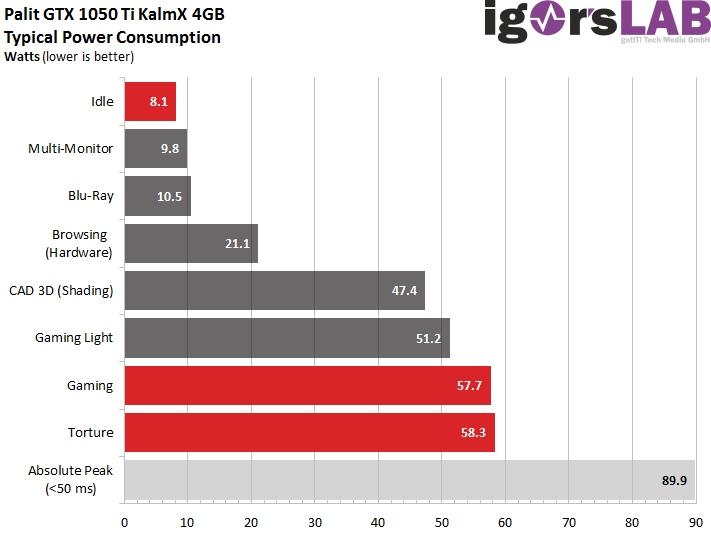
The two graphs that follow illustrate the gameplay over two minutes each in the gaming loop and in the Torture test, on which the respective calculation of the average power consumption is based.
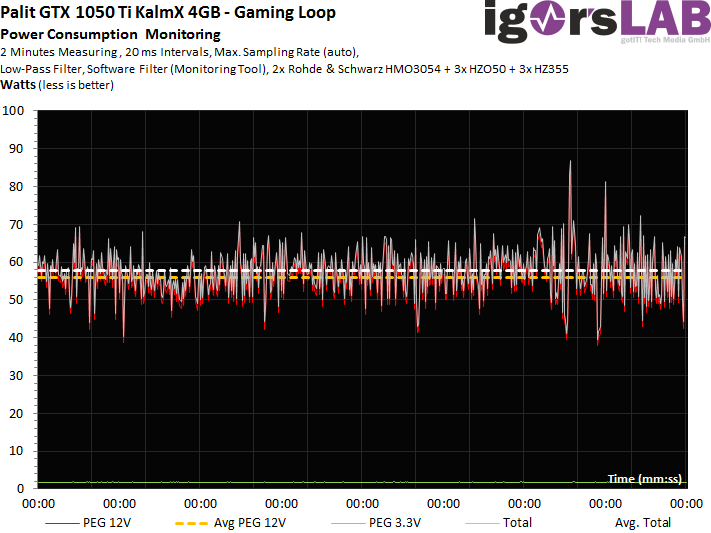 |
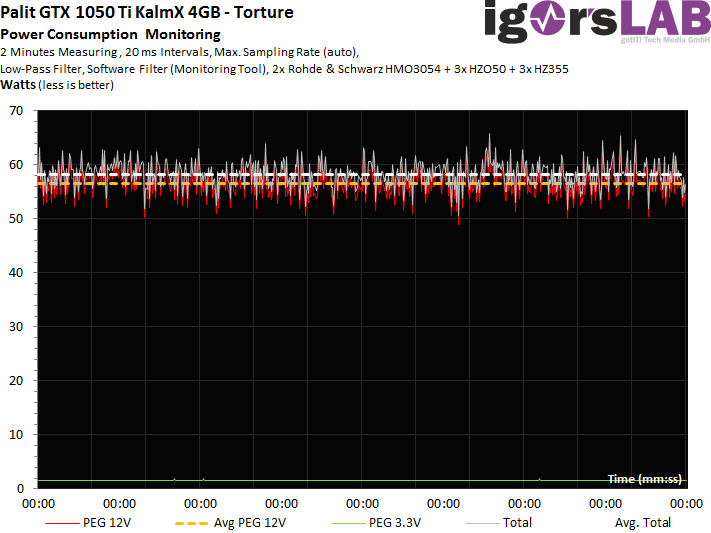 |
Let's now turn to the evaluation of the flowing currents, which in each situation are significantly lower than what the PCI SIG provides with a maximum of 5.5 amperes for the 12V motherboard connection:
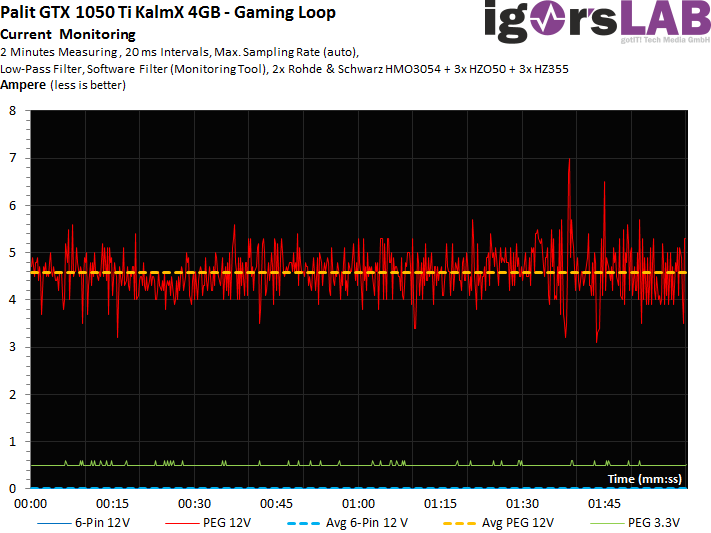 |
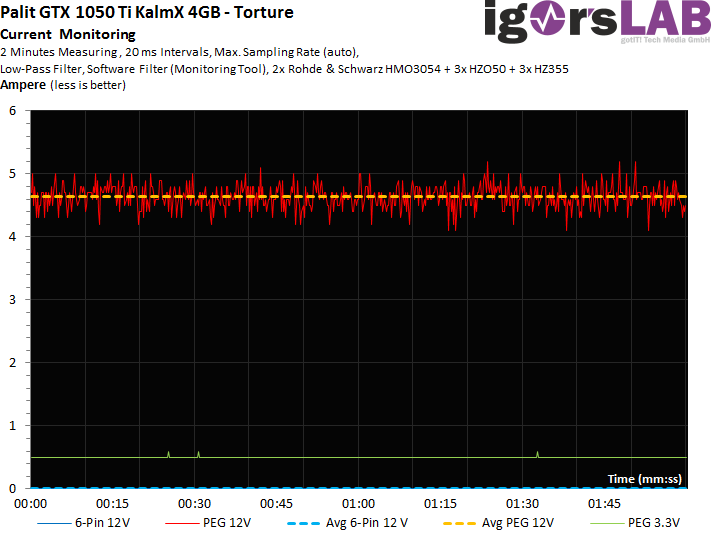 |
4th. Radiator construction
If you loosen the four screws on the GPU socket, the cooler can be easily removed. We see a massive copper heat sink, between which and an above aluminum block the two nickel-plated 6 mm heatpipes made of copper composite material were pressed in. The aluminium block bears the actual radiator construction, while the heatpipes are supposed to distribute the waste heat along the radiator fins better.
Nevertheless, both coolers differ not only in the slat orientation and the resulting arrangement of the heatpipes. Palit has at least tried to establish a contact between voltage converters and coolers with the help of thicker thermal pads. Did it help? We'll see.
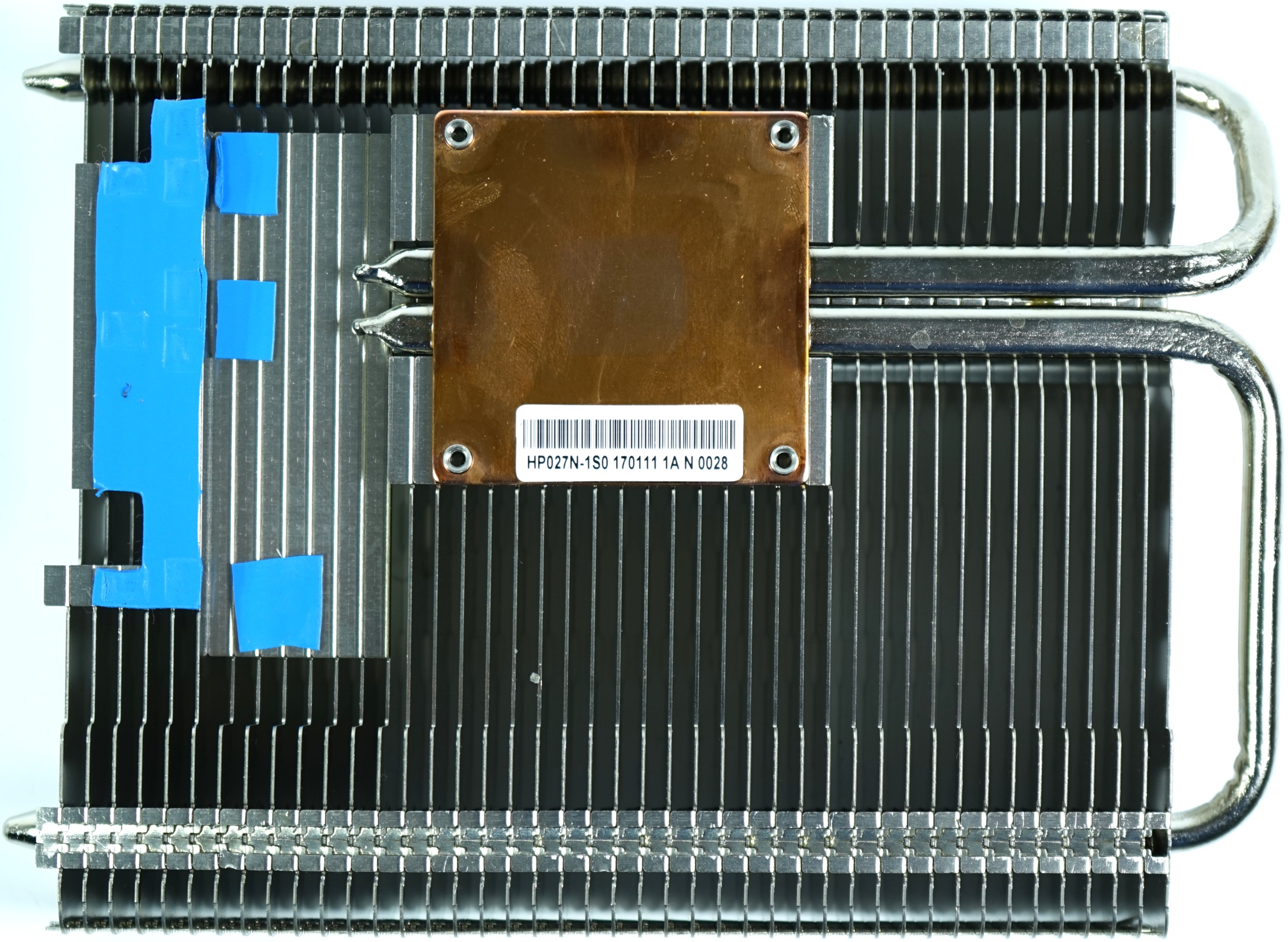
In summary again the most important technical data briefly as a tabular overview:


















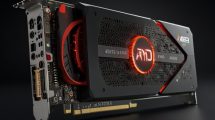














Kommentieren